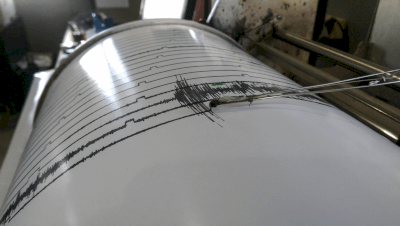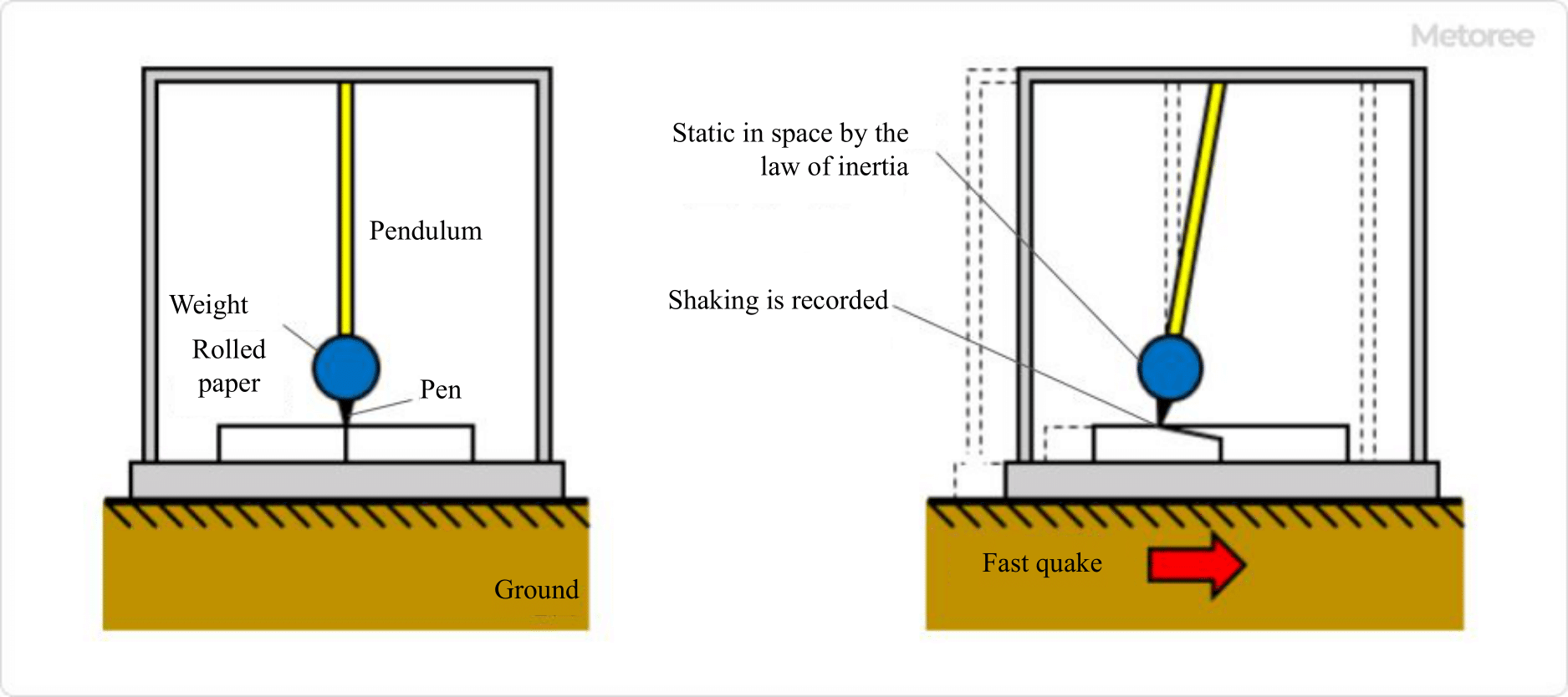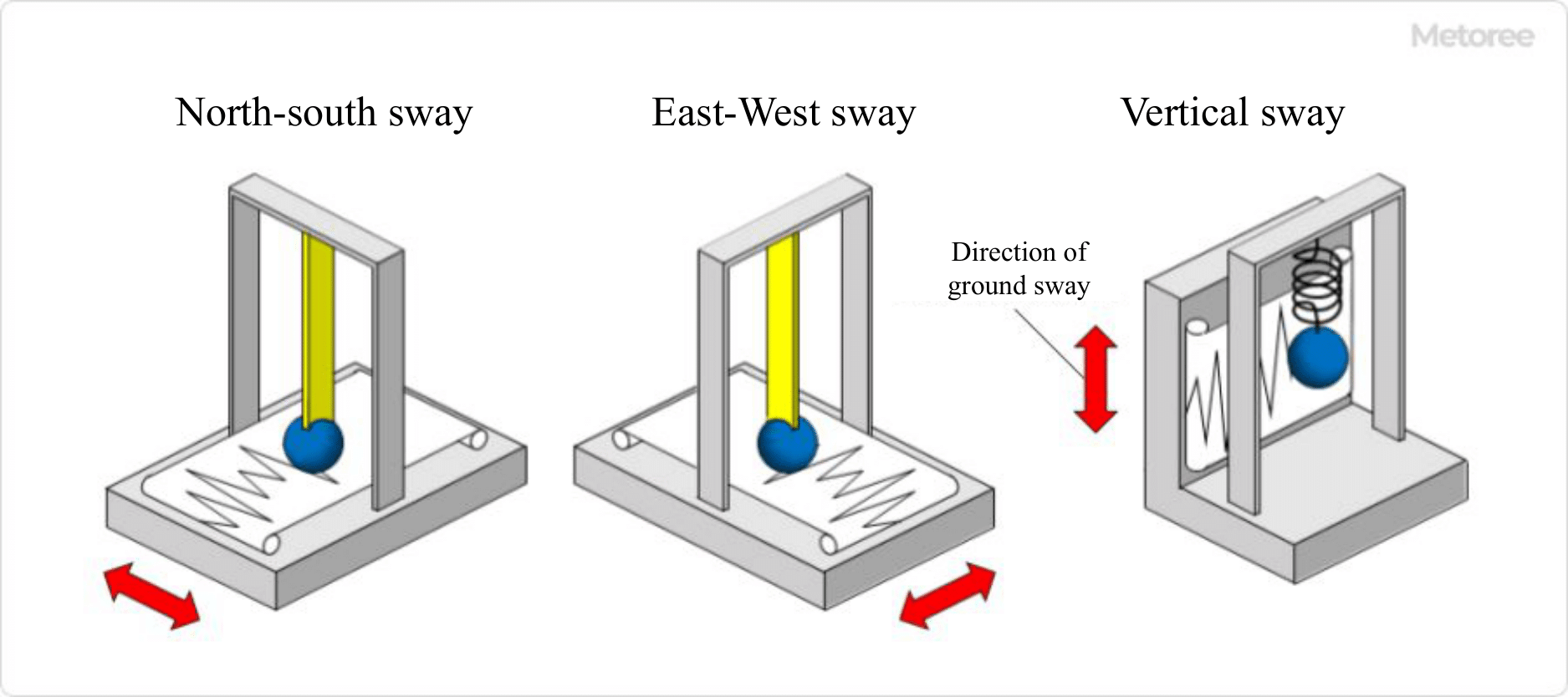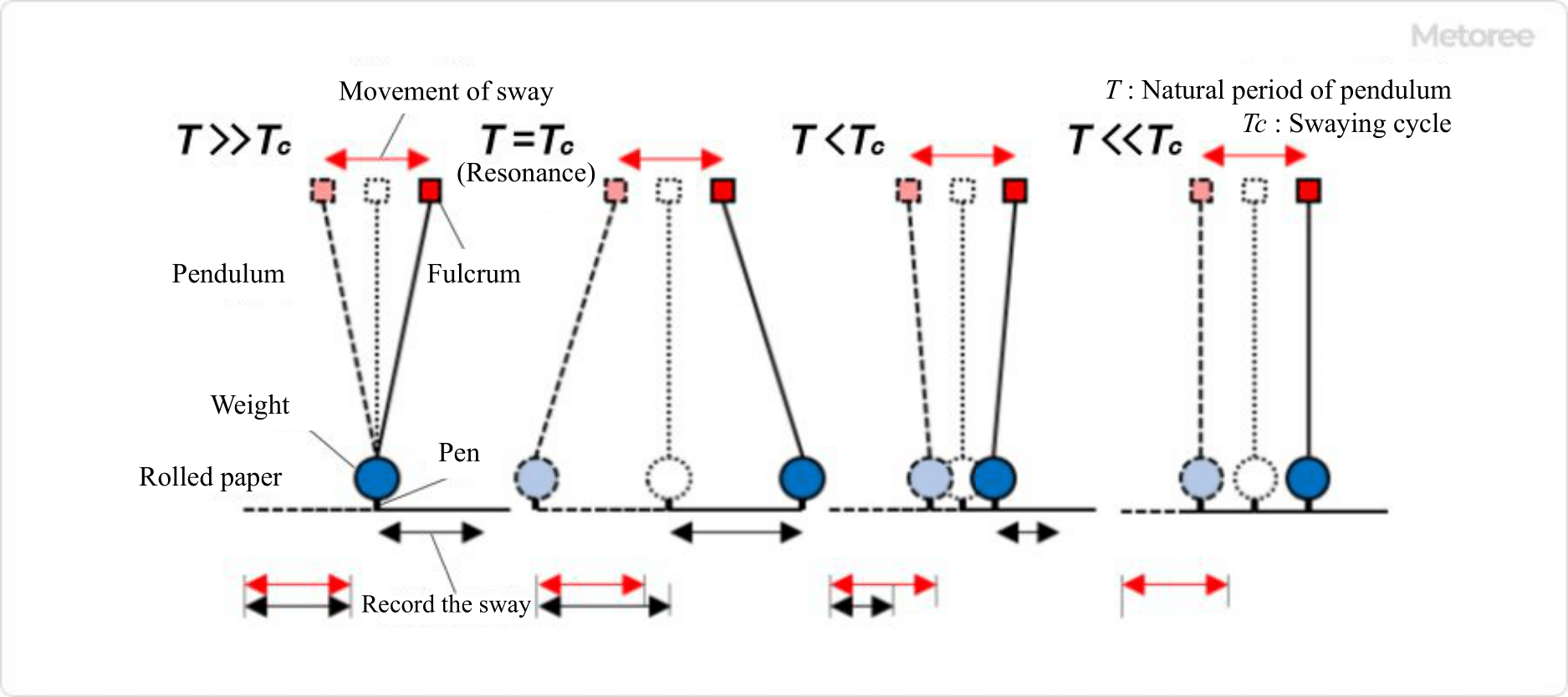All Categories
History












This section provides an overview for seismographs as well as their applications and principles. Also, please take a look at the list of 15 seismograph manufacturers and their company rankings. Here are the top-ranked seismograph companies as of December, 2025: 1.Seistronix, 2.Geospace Technologies Corporation, 3.NOMIS Seismographs, Inc..
Table of Contents
Categories Related to Seismographs

A seismograph is an instrument developed to record the seismic activity of an earthquake.
It is believed that the prototype already existed in China over 1,800 years ago, and is often referred to as the world's oldest seismograph. The modern seismometer is said to have been invented in Japan in the late 1800s, which has gone under major improvements since then.
A similar term to seismograph is seismic intensity meter, which is a type of seismograph. A seismic intensity meter has the function of calculating seismic intensity in addition to the function of a seismometer, so the name is used to distinguish it from a seismometer.
The data measured by seismographs are used for various earthquake countermeasures.
Seismographs are also used as instruments to observe volcanic activity.

Figure 1. Principle of a seismograph
Seismographs are instruments that use the principle of a pendulum.

Figure 2. Observation of three-way swaying
Since seismographs are usually installed on the ground surface or underground and move with the ground when it shakes, a reference point, called a fixed point, is necessary to ensure that the seismographs will never move in relation to the ground.
Assuming that the fulcrum of the pendulum is the ground, a pen is placed at the position of the weight, and a roll of paper fed at a constant speed is placed at its end. If the ground shakes quickly, the entire device will shake, but the weight remains stationary in space due to the law of inertia, so the ground shaking is recorded on the roll of paper. Earthquake shaking usually occurs in all directions, but shaking parallel to the movement of the paper rolls is difficult to record, three seismographs are used, each recording the three components of north-south, east-west, and vertical directions.
Recently, seismographs that record the movement of a pendulum as an electrical signal using a coil and magnet instead of a paper roll are also utilized.

Figure 3. Relationship between the natural period of the pendulum and the period of swaying
The observation of displacement, velocity, or acceleration of the ground is related to the natural period of the pendulum.
The time required for the weight to return to its original position when the pendulum swings freely is called the natural period. If the period of swing of the ground is very short compared to the eigen period, the weight will remain stationary. On the other hand, if the period of swing of the ground is very long compared to the eigen period, the weight will swing just like the ground. If the period of ground shaking coincides with the natural period, the weight will shake much more than the ground because of resonance.
A damper is installed on the weight to prevent resonance, and a response curve of seismographs is considered with the period of the ground on the horizontal axis and the displacement on the vertical axis.
In a region where the period of shaking is much shorter than the natural period and the displacement is constant, the weights are stationary in space. Therefore, it is possible to observe how much the ground has moved from its original position due to shaking, in other words, the displacement.
In a region where the period of shaking is equal to the natural period, the velocity can be observed, and in a region where the period is longer than the natural period, the acceleration can be observed.
There are three main types of seismographs: high-sensitivity seismographs for small tremors, broadband seismographs for slow tremors, and strong seismographs for strong tremors.
These are used appropriately for different purposes. For example, a high-sensitivity seismograph, due to its characteristics, may detect tremors that have nothing to do with the intended purpose, so measures such as drilling observation wells may be necessary.
There are two types of seismic observation: regular observation and temporary observation.
Regular observation is a method of continuous observation over a long period of time, while temporary observation is a method of limited observation over a short period of time. Temporary observations are conducted for specific purposes, such as aftershock observations after a major earthquake.
Seismographs are used in various efforts for disaster prevention and mitigation.
*Including some distributors, etc.
Sort by Features
Sort by Area

Geospace Technologies Corporation, based in Houston, Texas and established in 1980, is a manufacturer of global technology and instrumentation specializing in vibration sensing and ruggedized products. The company's product portfolio includes thermal imaging, real-time reservoir monitoring systems, wellbore solutions, marine seismic accessories, and seismic instrumentation, catering to industries including Oil and Gas, Aerospace and Defense, Automotive and Transportation, Construction, and Power Generation. The company also offers services such as reservoir monitoring solutions and Carbon sequestration, which involves storing carbon dioxide from the atmosphere to mitigate the human carbon footprint.

NOMIS Seismographs founded in 1982 in Birmingham, Alabama is a manufacturer of seismograph equipment, specializing in providing advanced solutions for monitoring ground vibrations and seismic activity. The company offers a wide range of seismographs and related equipment used in various applications, including earthquake monitoring, construction site assessments, and environmental studies. The aim of the company is to deliver authentic and precise seismographic tools that aid in safety and research efforts. Additionally, the company also offers services for the annual calibration of the transducer, and microphone, and an overall inspection of the seismograph.

Seistronix, founded in 1982 and located in Rancho Cordova, California, US, is the manufacturer of geophysical instrumentations. The company's products include EX-6, EX-12, RAS accessories, RAS-24 and RAS-120. The products are customized to meet the needs of mining, environmental, academic, oil and gas companies. It also has advanced recording systems that integrate rugged hardware with sophisticated software to ensure accuracy in gathering seismic data. The company also offers various services such as interpretation techniques, data processing methodologies, equipment use, and maintenance.

MAE Advanced Geophysics Instruments, founded in 1982 and headquartered in Via G. Di Vittorio, Italy, is a manufacturer of precision electronic instrumentation for geophysical investigations. The company’s extensive product portfolio includes advanced tools like the ultrasonic pulse velocity through concrete system, VHR multichannel georesistivimeter with embedded channels (ranging from 48 to 96), an instrument for ultrasonic pulse velocity and sonic tests with an instrumented hammer, and the X820S seismograph complete set with 48 channels for MASW seismic analysis. These instruments find applications in several fields, including seismology and earthquake engineering, environmental and soil testing, and non-destructive testing of concrete structures.

GEOTECH, founded in 2003 and based in Moscow, Russia, is a manufacturer of GPR (Ground Penetrating Radar), seismic and electrical survey equipment. The company produces security equipment like GPR-detectors for detection of people behind walls or under rubble, and instruments for finding mine explosive devices, armed cache and explosives. It performs engineering and geophysical surveys on the territory of roads and railways, airports, objects of housing and capital construction, hydraulic structures and in the oil and gas industry. The company's equipment and softwares help identify the causes of deformation of structures and monitor hazardous geological processes like landslide, karst-suffusion and flooding.

Nanometrics, in Kanata, Ontario, in 1986 is a manufacturer of seismic arrays and tsunami warning systems. The company's product portfolio includes seismometers used for seismic research, accelerometers used for strong motion and structural monitoring, digitizers, complete stations and software applications. The company serves industries such as Oil and Gas, Aerospace and Defense, Automotive and Transportation, Construction, and Power Generation. The company serves in more than 90 countries and has a 24/7 data center has allowed us to become one of the largest seismic monitoring network operators in the world.

GeoSIG, founded in 1992 and headquartered in Schlieren, Switzerland, is a manufacturer of earthquake, seismic, structural, dynamic and static monitoring and measuring solutions. The company provides precision instruments such as seismometers, accelerometers, recorders / digitisers, switches, softwares and other accessories. Such solutions find application in nuclear power plants, factories, dams, bridges, railways and other seismic and structural health and response monitoring. NetQuakes installation with USGS and Oresund Bridge in Denmark are some of the well known projects using these solutions. The company provides detailed case studies of its product application as a resource on the website.

Chongqing Gold M & E Equipment Co. Ltd. was founded in 1998 and is a manufacturer of high-resolution geophysical equipment based in Jiulongpo, Chongqing, China. The company manufactures geophysical equipment such as underground water detectors, water well drilling rigs, and borehole imaging equipment. These products are used in engineering exploration, seismic monitoring, and groundwater searching. The company has self-managerial import and export authority for product distribution, with products being sold to Australia, Asia, and North America.

GEObit instruments, founded in 2000, is a manufacturer based in Patras, Greece, specializing in advanced sensing devices designed for geophysical and seismic monitoring purposes. The company’s portfolio includes broadband seismometers, wideband seismometers, and digitizers or recorders. An addition to its offerings is the GEOscock software, serving as a real-time or playback peak velocity value (PPV) calculator. These products are engineered to address various needs, such as earthquake early warning systems, induced seismicity monitoring, satellite seismic networks, and low frequency passive survey for hydrocarbon exploration. Industries such as oil and gas, geothermal, seismology, and structural engineering benefit from the applications of these products.

Meisei Electric Co., Ltd. is an electronics and communications equipment manufacturer established in 1938 and based in Tokyo, Japan. It manufactures radiosonde, cloud particle sensors, and upper-air sensors. It also manufactures satellite components, including satellite transceivers and satellite monitor cameras. The company is GRUAN certified, won the AAA grades at the International Radiosonde Competition in Switzerland and acquired ISO 14001:2015 and ISO 9001:2015 certifications. It has partnered with the Department of Aeronautics and Astronautics at the University of Tokyo and the Japan Meteorological Agency AMeDAS. Its manufactured products cater to the meteorological and aerospace industries in Japan, Indonesia, India, and Turkey.

Güralp, founded in 1985 and headquartered in Aldermaston, UK, is a manufacturer of seismic instrumentation and seismic monitoring systems. The range of products company provides include surface, subsurface and ocean bottom instruments, turnkey seismic monitoring systems, data acquisition equipment and seismic softwares and apps. The instruments have an array of monitoring applications from strong motion instruments for civil monitoring requirements to very sensitive vault instruments designed for teleseismic research. Additionally, it provides monitoring systems comprising of power and communications modules, interface hardware and other bespoke elements. The company offers various services including integration testing, installation services, data analysis and project management.

Sercel, founded in 1962 and headquartered in Nantes, France, is a manufacturer of high-tech solutions such as sensors and monitoring systems for subsurface exploration. The company develops a range of sensors, sources, systems and softwares for data science, earth and infrastructure monitoring, energy transition and defence. It combines geoscience with technology to explore and derive subsurface data. Some of these technologies are seismic acquisition system, structural health monitoring system, all-terrain vibrators and land nodal system. The company also assists operators and contractors in solving operational problems and ensuring that projects adhere to technical specifications and are completed within the budget and timeframe.

Kokusai Inc is an industrial equipment manufacturer and distributor headquartered in Tokyo, Japan, with the main USA offices in Indianapolis, Indiana. The company was established in 1969 and has over 300 employees worldwide. It reports over $120,000,000 in annual revenue and is in the stock exchange market as JASDAQ. Kokusai manufactures balancing, uniformity, & gauging equipment. Their product equipment lineup range from dynamic balancing machines and shaft straightening systems to coil winding testers. In contrast, their lab testing equipment includes impact testers, tire laboratory testers, to servo-controlled specialized testers.


Toshniwal Brothers Pvt. Ltd (TBP) is an Indian distributor of high tech laboratory equipment and instrumentation that was established in Geddalahalli, Bangalore in 1948. The company offers equipment and instruments for life science applications such as cell sorters, fluorescence microscopes and confocal microscopes, as well as tools for material and nanoscience applications including x-ray diffraction systems, atomic force microscopes, and nanoindenters. TBP products are mainly used in India’s research and development institutions, as well as in its biotechnology, pharmaceutical, chemical processing, metalworking industries.
Ranking as of December 2025
Derivation Method| Rank | Company | Click Share |
|---|---|---|
| 1 | Seistronix |
12.1%
|
| 2 | Geospace Technologies Corporation |
10.6%
|
| 3 | Kokusai, Inc. |
10.0%
|
| 4 | NOMIS Seismographs, Inc. |
9.0%
|
| 5 | GEOTECH |
7.5%
|
| 6 | Chongqing Gold M& E Equipment Co., Ltd. |
7.0%
|
| 7 | Geobit Instruments |
6.3%
|
| 8 | Sercel |
5.6%
|
| 9 | Güralp |
5.4%
|
| 10 | Toshniwal Brothers Pvt. Ltd. |
5.4%
|
Derivation Method
The ranking is calculated based on the click share within the seismograph page as of December 2025. Click share is defined as the total number of clicks for all companies during the period divided by the number of clicks for each company.Number of Employees
Newly Established Company
Company with a History
*Including some distributors, etc.
*Including some distributors, etc.
| Country | Number of Companies | Share (%) |
|---|---|---|
 United States of America
United States of America
|
3 | 30.0% |
 Italy
Italy
|
1 | 10.0% |
 Russia
Russia
|
1 | 10.0% |
 Canada
Canada
|
1 | 10.0% |
 Switzerland
Switzerland
|
1 | 10.0% |
 China
China
|
1 | 10.0% |
 Greece
Greece
|
1 | 10.0% |
 India
India
|
1 | 10.0% |
46 products found
46 products
Logical product Co., Ltd.
1230+ people viewing
Last viewed: 1 hour ago
It is a wireless vibration sensor that is ideal for measuring the shaking of bridges, buildings, etc. equipped with a high-precision acceleration s...
Takamizawa Cybernetics Co., Ltd.
530+ people viewing
Last viewed: 7 hours ago
■A quick initial response system in the event of an earthquake is based on accurate seismic intensity information and is certified by the Japan Met...
Takamizawa Cybernetics Co., Ltd.
570+ people viewing
Last viewed: 5 hours ago
■A quick initial response system in the event of an earthquake is based on capturing accurate seismic intensity information using a measuring seism...
Challenge Co., Ltd.
730+ people viewing
Last viewed: 17 hours ago
First in Japan. Built-in sensor supports direct earthquakes. The high-performance built-in sensor will notify you of an earthquake before a large t...
Telenet
490+ people viewing
Last viewed: 5 hours ago
Hazard Pro is an emergency earthquake bulletin receiver (built -in earthquake meter) that supports the earthquake information faster and more accur...
3 models listed
J Corporation
410+ people viewing
Last viewed: 1 day ago
Features and functions of the direct dragon ■No line required, no radio waves required Nadir Dragon does not require earthquake information from t...
J Corporation
1530+ people viewing
Last viewed: 12 hours ago
■ The S wave has been upgraded. Measure the seismic intensity of the installation location in real time. Do not miss the timing of the alarm. You ...
Takamizawa Cybernetics Co., Ltd.
590+ people viewing
Overview ■A quick initial response system in the event of an earthquake is based on capturing accurate seismic intensity information using a measur...
Takamizawa Cybernetics Co., Ltd.
500+ people viewing
Last viewed: 1 day ago
Overview ■Strong motion measuring device (seismograph) certified by the Japan Meteorological Agency for large-scale safety management of dams, wate...
Takamizawa Cybernetics Co., Ltd.
690+ people viewing
Last viewed: 1 hour ago
Overview ■A quick initial response system in the event of an earthquake is based on capturing accurate seismic intensity information using a measur...
Takamizawa Cybernetics Co., Ltd.
780+ people viewing
Last viewed: 1 day ago
Overview ■A quick initial response system in the event of an earthquake is based on capturing accurate seismic intensity information using a seismo...
ANEOS Corporation
520+ people viewing
Last viewed: 10 hours ago
Using algorithms specified by the Japan Meteorological Agency, it automatically calculates and displays the seismic intensity scale from 0 to 7 whe...
ANEOS Corporation
480+ people viewing
Last viewed: 27 minutes ago
This is a seismometer that can be directly connected to a network (LAN). When an earthquake is detected, it starts recording waveform data and perf...
ANEOS Corporation
420+ people viewing
Last viewed: 1 day ago
A compact seismic intensity meter with a built-in MEMS acceleration sensor. It can be used as an item in an earthquake information system for the p...
Marui Co., Ltd.
290+ people viewing
Last viewed: 5 hours ago
Soil testing equipment Soil: Field investigation ■This is a soil investigation device for investigating the characteristics of the ground during on...
Hotron Co., Ltd.
190+ people viewing
■Suitable for a wide range of applications such as automatic doors, factory equipment, and broadcast equipment. ・Open: Automatically open doors an...
5 models listed
Showa Sokki Co., Ltd.
810+ people viewing
Last viewed: 20 hours ago
■Features ・Vibration detector for seismic motion monitoring. Ideal for safe shutdown of plant equipment and evacuation standards in the event of a...